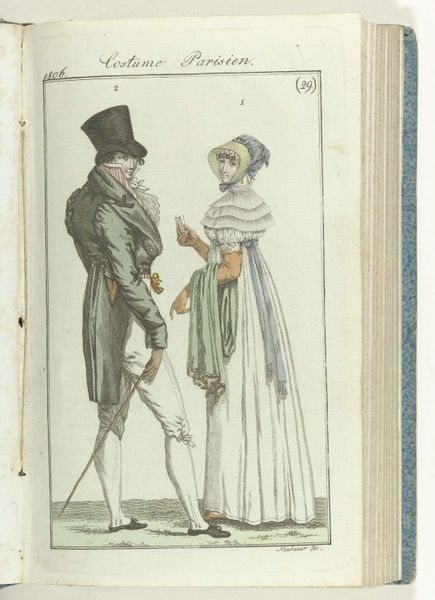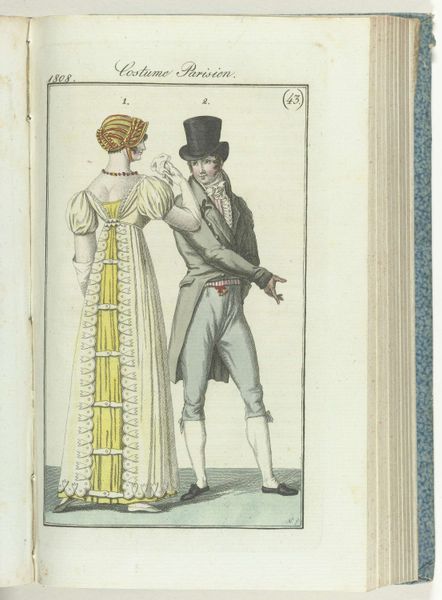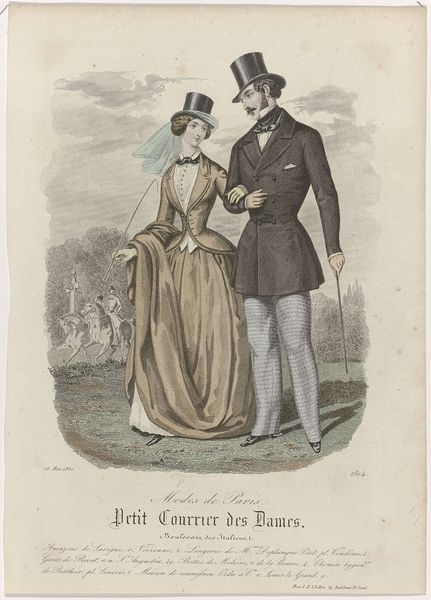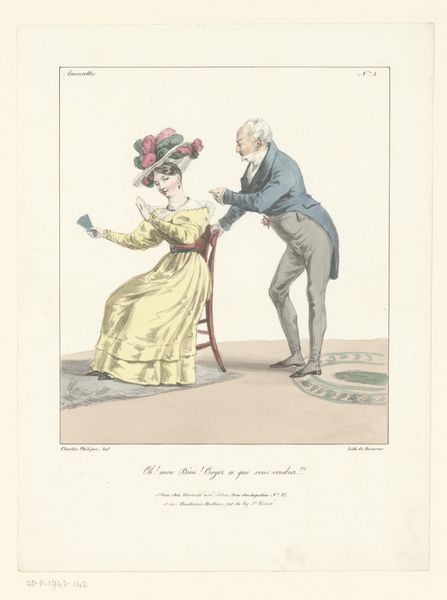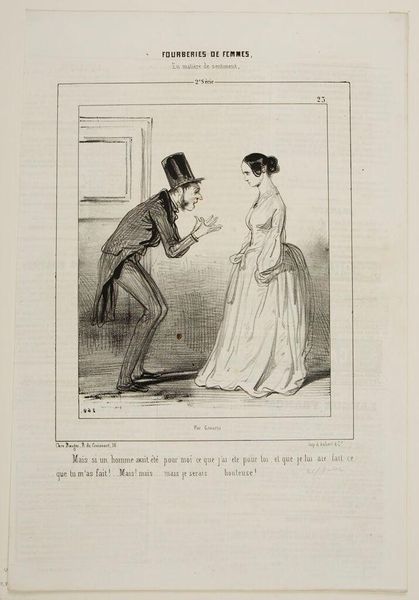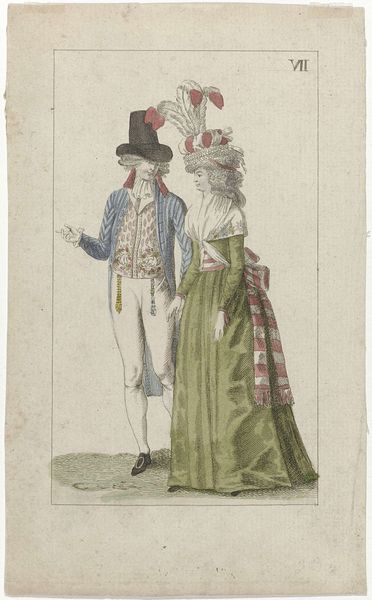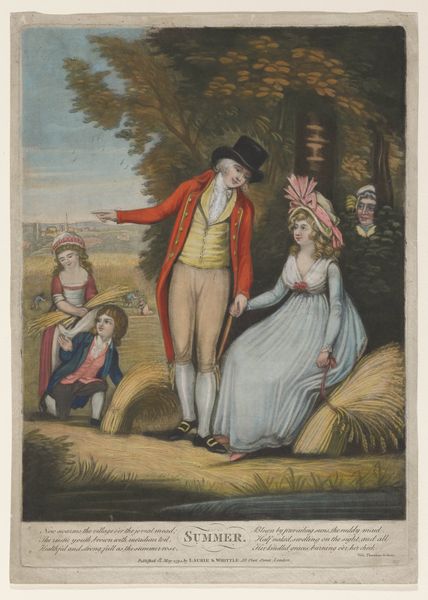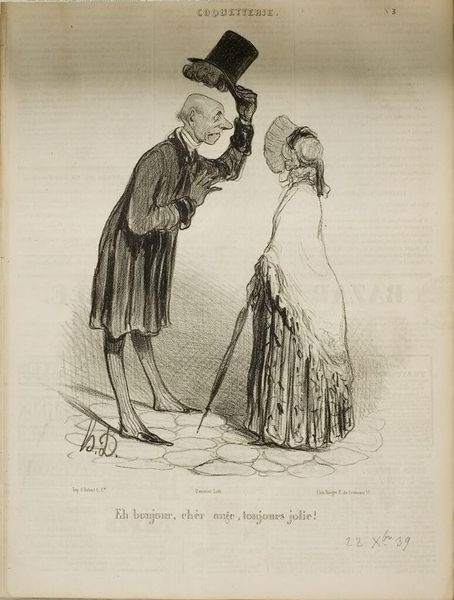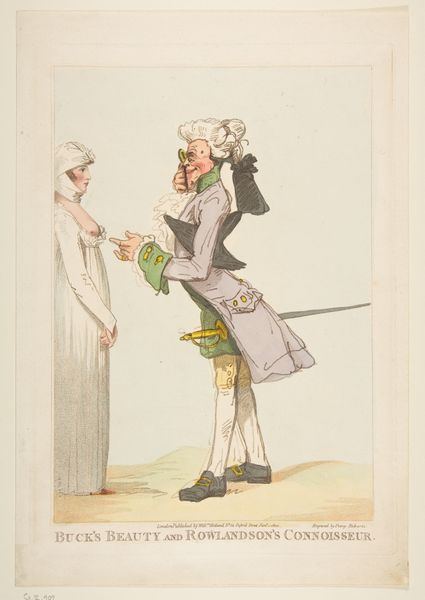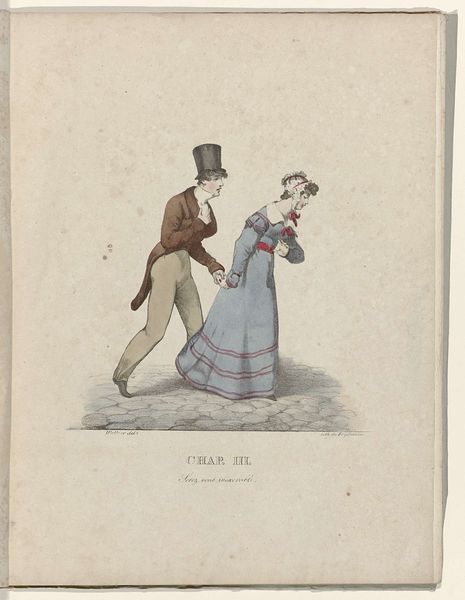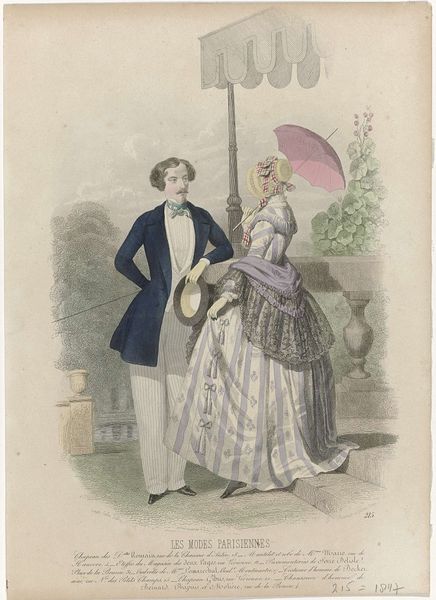
Elegantia, of tijdschrift van mode, luxe en smaak voor dames, September 1807, No. 20: Morning dresses for Sept. 1807 1807
0:00
0:00
#
portrait
#
neoclacissism
# print
#
caricature
#
portrait drawing
#
genre-painting
Dimensions: height 223 mm, width 123 mm
Copyright: Rijks Museum: Open Domain
This fashion plate, made in 1807 by an anonymous artist, was printed using engraving and etching, then carefully hand-colored. Engraving and etching were well-established reproductive technologies at this time. The print would have been accessible to a relatively large audience, eager to know what was fashionable. Notice how the garments are rendered with great attention to the details of fabric. The flowing white dress of the woman is set off by the crisp lines of the man’s tailored jacket, all carefully delineated with etched lines and blocks of color. The choice of materials here is important too. The textiles would have been made from cotton or linen; this was a period when global trade networks brought these materials to Europe for manufacture. The clothing itself was an industry, employing many hands. So, this image is not just a record of fashion, but a product of sophisticated manufacturing and distribution, reflecting wider social issues of labor, politics, and consumption. Considering its context, the print challenges traditional distinctions between fine art and craft and encourages us to think about the importance of materials and making in understanding its full meaning.
Comments
No comments
Be the first to comment and join the conversation on the ultimate creative platform.

